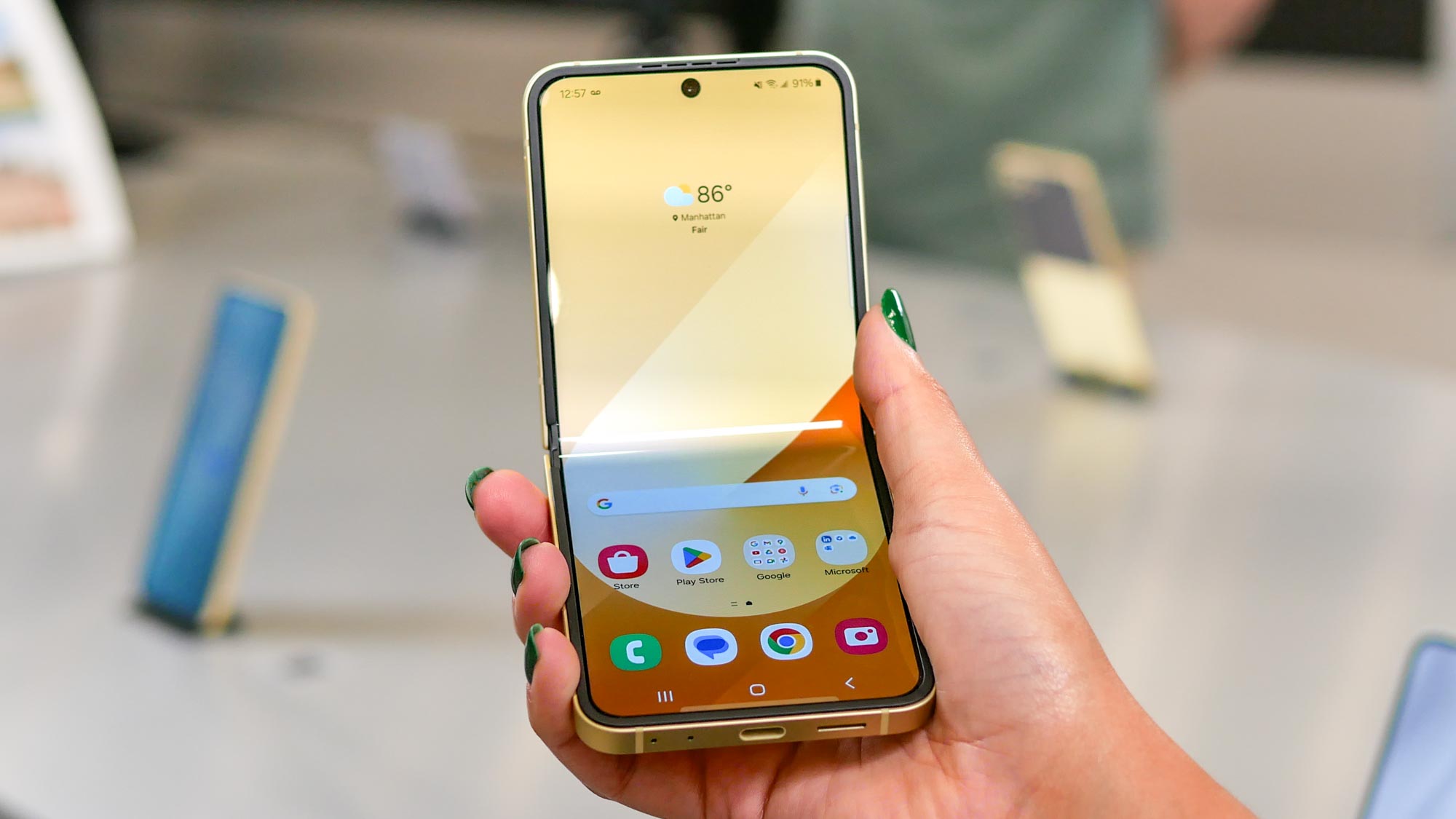The race is on to see which flip-style foldable phone is better! There’s still no definitive outcome between a Galaxy Z Flip 6 vs. Razr Plus 2024 matchup, until I can properly put Samsung’s newest flip phone through its paces. However, there are still several ways that the Galaxy Z Flip 6 beats the Razr Plus (2024).
These are two devices that can try to convince people to ditch their usual slate phones, but in my Galaxy Z Flip 6 hands-on, I mention how Samsung’s upgraded its foldable in such a way this time around that it could very well take back its crown. This is notable because Motorola did such a better job with its phone last year, so much so that it briefly took over Samsung’s throne in our best foldable phones guide.
Even with all of these reasons I’ll detail below, it’s worth noting that the Flip 6’s $1,099 pricing is $100 more than its predecessor — so all of its upgrades and new features really need to prove it’s worth it over the cheaper $999 Razr Plus.
Better processor
| Galaxy Z Flip 6 | Razr Plus (2024) | |
| CPU | Snapdragon 8 Gen 3 | Snapdragon 8s Gen 3 |
| Geekbench 5 (single core/multicore) | 2,091 / 7,022 | 1,834 / 4,848 |
| 3DMark Wild Life Unlimited (fps) | 113.4 | 73.74 |
This one’s the most obvious, especially knowing that Qualcomm’s top-of-the line silicon is the Snapdragon 8 Gen 3 — which powers the Flip 6. By default, it’s higher on the totem pole than the Snapdragon 8s Gen 3 chip in the Razr Plus 2024.
However, what’s more revealing are the benchmark scores we got out of the Razr Plus 2024. Just take a peek at the comparison table above pitting the Razr Plus 2024’s benchmark scores against the Z Flip 6. It’s a one-sided affair as the Flip 6 wins both in GeekBench and 3DMark’s Wild Life Unlimited tests.
More camera utility

One of the biggest things I was critical about in my Motorola Razr Plus 2024 review was that it ditches the ultrawide camera in favor of a telephoto camera with 2x optical zoom. While optical zoom lenses are rare among flip-style phones, I think Samsung has the better implementation by pairing its new 50MP main camera with a 12MP ultrawide.
The latter’s important because it makes the Z Flip 5 much more suited for group photos or vlogging than the Razr Plus. Adding on to that, Samsung’s also leaning on pixel binning tech to effectively give the Flip 6 a 2x zoom with optical-like quality. I’ve seen this technique used to great extent on other phones, like the iPhone 15, so I’m hopeful that the Z Flip 6’s zoom can match the Razr Plus’ optically backed one.
More AI features

Even though Motorola teased its new Moto AI features during the Razr Plus’ announcement, they actually won’t be coming to the phone until a later date. That’s a big loss in my opinion and clearly makes the Z Flip 6 the better AI phone in the interim.
Not only does the Z Flip 6 gain the same set of Galaxy AI features I first tried out with the Galaxy S24 Ultra, like Instant Slow Mo and Generative Edit, but it also gets a few more new ones that are available to Sammy’s new foldables for a limited time. I’m referring to new Galaxy AI features like Photo Assist that uses generative AI to transform my photos into artistic drawings and renders, as well as intelligent replies that the Z Flip 6 generates specifically for its FlexWindow display with Suggestive Replies.
Extra storage option

I’m always taking tons of photos on my phones, which is why having more storage is nice. With the Motorola Razr Plus 2024, you’re stuck to just 256GB. That’s pretty generous to begin with in my opinion. However, I know how quickly that can fill up when I also record a lot of 4K videos. That’s why the 512GB storage option with the Galaxy Z Flip 6 is there if you’re a power user like me. Although, it’s worth mentioning the additional cost it tacks on — a whopping $120 extra, making it $1,219.
More dynamic phone cases

I can’t deny that the Razr Plus 2024 is one of the most stylish phones around, but Samsung comes close to matching it with the Z Flip 6. What makes it better are the new FlipSuit cases that’s available with the Z Flip 6, since these protective cases have neat artistic designs to give the phone more personality.
Taking it one step further are the FlipSuit cases with built-in LEDs that light up. They’re flashy and make the flippable stand out even more, something I rarely don’t see in other phones. In fact, phone cases with flashy LEDs are few and far between — and oftentimes they’re from third-parties on Amazon with less than ideal build qualities.
More compact design
| Galaxy Z Flip 6 | Razr Plus (2024) | |
| Size Opened | 6.5 x 2.83 x 0.27 inches | 6.74 x 2.91 x 0.27 inches |
| Size closed (single core/multicore) | 3.35 x 2.83 x 0.58 inches | 3.46 x 2.91 x 0.6 inches |
| Weight (oz) | 6.59 ounces | 6.66 ounces |
While I love the fashion-focused aesthetics of the Razr Plus 2024, complete with contoured edges, it’s still a lot of phone to handle. In contrast, the Flip 6’s much easier to use one-handed because of its more compact design — which also helps out when you have that urge to open or close the phone the old-school flip phone way.
Not only is it the Flip 6 narrower at 2.83 inches, but it’s not as tall either at 6.5 inches when it’s opened. On top of that, the Z Flip 6 sports a lighter frame of 6.59 ounces — versus the Razr Plus’ 6.66 ounces. These figures may not seem like a big deal on paper, but it does when you hold the two side-by-side one another.


























